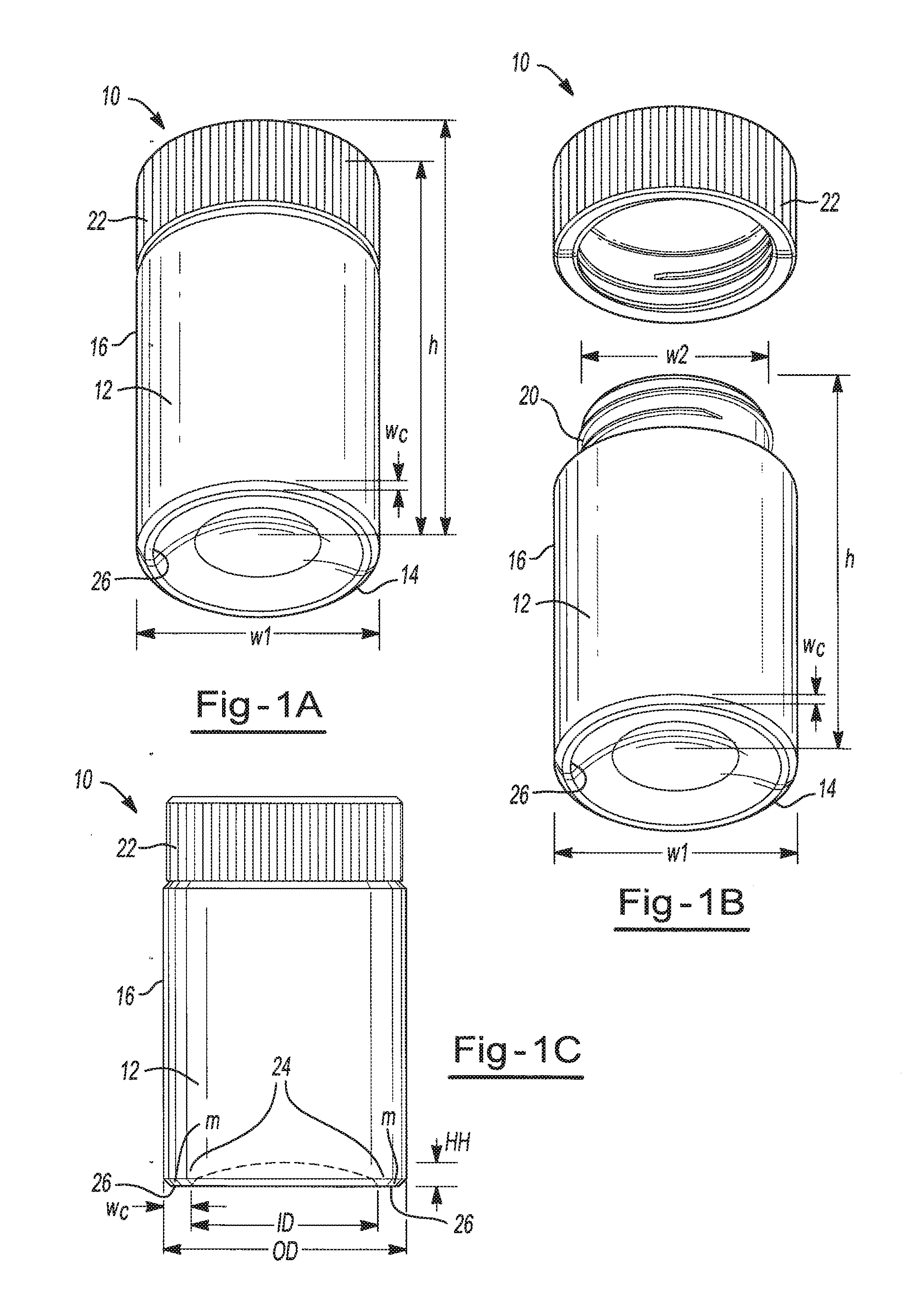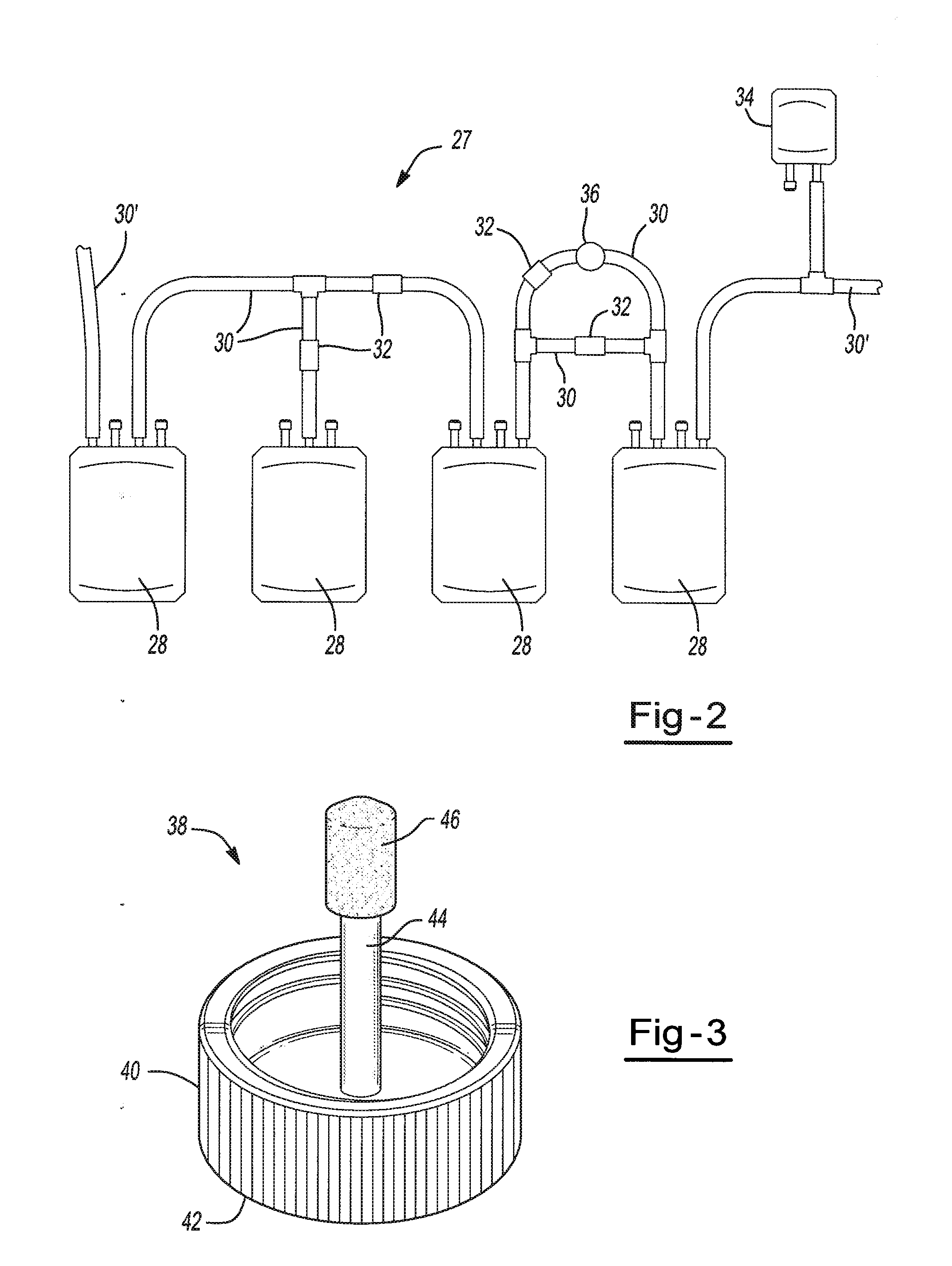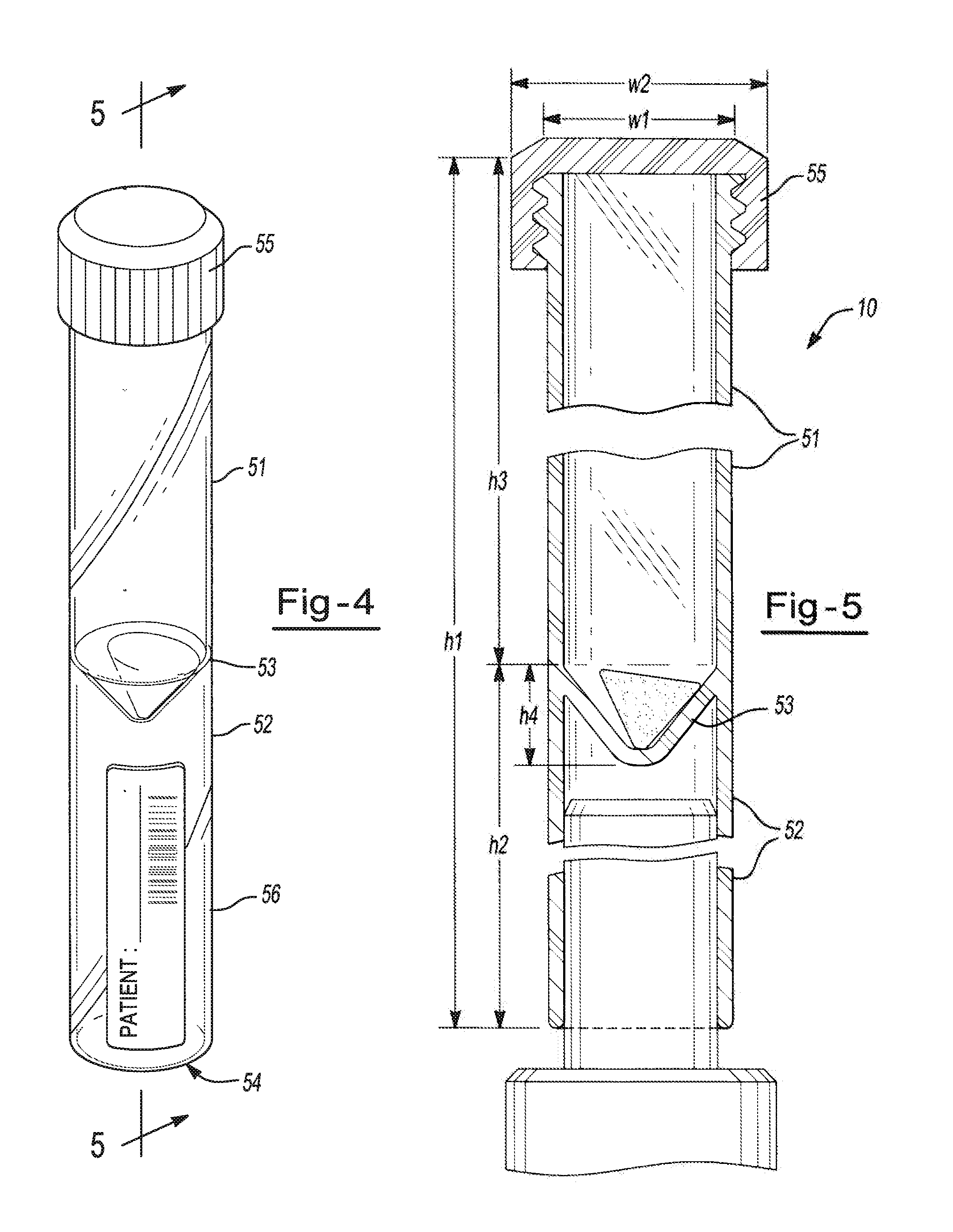Method for screening blood using a preservative that may be in a substantially solid state form
a preservative and blood technology, applied in the field of biological sample preservation, can solve the problems that traditional cell preservation methods may not sufficiently preserve white blood cell components, and achieve the effect of constant dimension cross section
- Summary
- Abstract
- Description
- Claims
- Application Information
AI Technical Summary
Benefits of technology
Problems solved by technology
Method used
Image
Examples
example
[0092]A generally cylindrical glass vial having a screw cap, such as the storage device of FIGS. 1A-1C, having a volume of about 1000 μl is filled with about 100 μl of an aqueous stock solution that includes about 0.85% by weight ethylenediaminetetraacetic acid (EDTA), about 12.5% by weight imidazolidinyl urea (IDU), and about 0.1 mg / 100 ml FD&C #40 red dye. Water from the stock solution is removed from the vial; specifically, the solution is dried by placing in a controlled humidity chamber for about 24 hours at a temperature of about 22° C. and a relative humidity of about 23%. Upon drying, a visible red ring coats the base of the vial.
[0093]The vial is positioned on a holder at an angle of about 45° and held for periods of one hour, 24 hours, 72 hours and one week. In each instance, the resulting coating remains substantially static and free of any flow visibly detected by the naked eye.
[0094]Thereafter about 500 μl of leukoreduced blood product sample is introduced into the vial...
PUM
| Property | Measurement | Unit |
|---|---|---|
| time | aaaaa | aaaaa |
| temperature | aaaaa | aaaaa |
| volume | aaaaa | aaaaa |
Abstract
Description
Claims
Application Information
 Login to View More
Login to View More - R&D
- Intellectual Property
- Life Sciences
- Materials
- Tech Scout
- Unparalleled Data Quality
- Higher Quality Content
- 60% Fewer Hallucinations
Browse by: Latest US Patents, China's latest patents, Technical Efficacy Thesaurus, Application Domain, Technology Topic, Popular Technical Reports.
© 2025 PatSnap. All rights reserved.Legal|Privacy policy|Modern Slavery Act Transparency Statement|Sitemap|About US| Contact US: help@patsnap.com



